After two failed attempts at rebooting the franchise on the big screen, both of which envisioning a trilogy with planned sequels that were ultimately scrapped, the Terminator franchise is in worse shape than ever in the late 2010’s. Despite an iconic, outstanding duo of movies that were originally delivered from creator, writer and director, James Cameron in 1984 and 1991, respectively, the Terminator movies have never ultimately been able to recapture that same excellent standard from their two classic progenitors. One hypothesis as to why this is involves the fact that Cameron departed the franchise he initially brought to life after 1991’s Terminator 2: Judgment Day, leaving the successive threequel, and two subsequent reboots (excluding FOX’s surprisingly great and infuriatingly short-lived Terminator: The Sarah Connor Chronicles television series), in the hands of other writers, producers and directors, which, evidently, has always produced consistently disappointing results.
Thus, with the proposed Terminator: Genisys sequels being cancelled by current Terminator rights holder, Skydance Media, following Terminator: Genisys’ lacklustre reception and poor domestic box office returns in 2015, the only move left for Skydance was to turn to Terminator’s original creator, in hopes of finally re-launching the franchise successfully. Indeed, despite still being neck-deep in his perpetually-delayed Avatar sequel projects, Cameron found some time to come back as a producer for the series’ newest cinematic effort, Terminator: Dark Fate. Cameron also provided the story treatment for this new movie, which ignores the events of 2003’s Terminator 3: Rise of the Machines, 2009’s Terminator: Salvation and 2015’s Terminator: Genisys (and obviously, the cruelly prematurely-murdered Terminator: The Sarah Connor Chronicles), to instead more or less envision the premise for the Terminator 3 that James Cameron would have made back in the day, if he hadn’t left the franchise after the second movie.
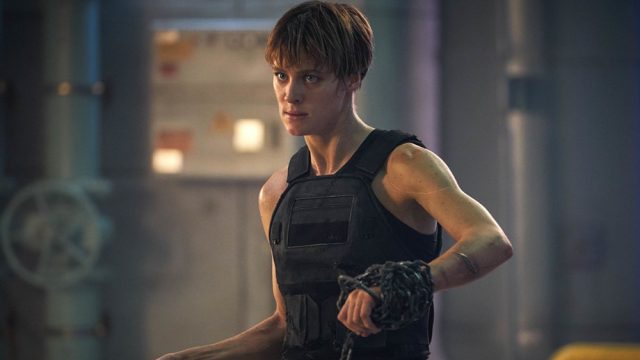
That said though, Terminator: Dark Fate’s script is still the byproduct of three people, with even more tweaking the initial story treatment, and yet another director succeeding Cameron in a helming job that Cameron should probably be doing himself, were it not for those aforementioned Avatar sequels that seem like they’re never going to come out. As you can imagine, that’s a lot of clashing creative visions layered on top of Cameron’s initial story pitch, but surprisingly, Terminator: Dark Fate nonetheless still ends up being the best Terminator sequel to come out since Terminator 2: Judgment Day, almost three decades ago. That’s the good news.
The bad news however is that Terminator: Dark Fate still falls well short of the first two landmark Terminator movies, despite Cameron’s involvement with this particular offering. The ultimate themes of the movie feel confused and inconsistent most notably, which is likely a byproduct of the many writers and producers that are trying to hack out this script. The direction is also very uneven in some places, resulting in an inconsistent quality to both the action and the dialogue. Finally, despite Terminator: Dark Fate’s solid story ideas and good character work, it does sometimes feel like it’s trying too hard to apologize for the lacklustre sequels that have preceded it since 2003, and that leads to a movie that feels like it’s spending too much time trying to recapture what made the first two Terminator movies so great, without confidently developing its own modern vision to continue this saga in a truly impactful way.
One of the biggest draws behind Terminator: Dark Fate for longstanding Terminator fans, aside from this new movie cleaning house and taking all of the post-Terminator 2: Judgment Day sequels out of canon, is the return of Linda Hamilton as Sarah Connor. The role has been succeeded by both Lena Headey and Emilia Clarke in Terminator: The Sarah Connor Chronicles and Terminator: Genisys, respectively, but there really is no substitute for Hamilton, even so many years later. With this new sequel picking up in real-time in 2019 then, Hamilton’s Sarah is now an aged, battle-hardened survivor who no longer dies of leukemia in this new timeline, and is continuing to search for meaning in a world where Judgment Day was actually successfully averted for good, at least at the hands of Skynet.

Unfortunately, I can’t discuss too much about Sarah’s character arc in this sequel without outing a major (and highly controversial!) spoiler from the movie’s opening moments, which sets Sarah’s character arc on a very unexpected new path for this latest follow-up. I will say however that Linda Hamilton still fits this role like a glove, acting with an incredible amount of grizzled presence that also continues to capture a surprising air of vulnerability behind a woman who is otherwise a stone-cold badass. Likewise, Canadian actress, Mackenzie Davis also fits this sequel’s surrogate Kyle Reese role pretty well as Grace, a soldier sent from a new future to yet again prevent an A.I.-catalyzed apocalypse, this time being different than what Sarah and her son initially stopped during the events of Terminator 2: Judgment Day. Davis is primarily known for her role in AMC’s computer-themed drama series, Halt and Catch Fire, though she has dabbled in sci-fi with 2017’s Blade Runner 2049, now being allowed to flex her metaphorical muscle as a would-be action heroine in Terminator: Dark Fate. The results are pretty good too, since Davis is plucky, agile and quick with snarky delivery, allowing her to mostly keep pace with the veteran character of Sarah Connor, particularly now that the protagonists must avert a different apocalyptic future.
A new future means a new target to protect as well, and that comes in the form of Natalia Reyes’ Dani Ramos, an innocent auto plant worker who winds up being targeted by a deadly new Terminator variety called the Rev-9, played by Gabriel Luna. Luna has proven that he can do genre action after a brief stint as Ghost Rider on Marvel’s Agents of S.H.I.E.L.D. television series, and his new Terminator is pretty cool in concept too, being able to split its liquid metal/flesh exterior away from its internal robot body, essentially allowing it to function as a T-800 and a T-1000 at the exact same time. This naturally leads to some pretty inspired action scenes, when they’re directed well anyway, though Luna is definitely at his best when he’s not being forced to interact with other characters. Apparently, the decision was made to have the Rev-9 be extra charismatic and socially adept, which is a potentially interesting idea, especially since this allows him to blend in with humankind a lot better than the T-800 especially. Unfortunately though, Luna’s not really an imposing actor (sure, he was Ghost Rider, but he had his face hidden under CGI in that case), so his Rev-9, while undeniably devious, also doesn’t manage to be truly scary, which does occasionally deflate some of the tension in certain scenes.
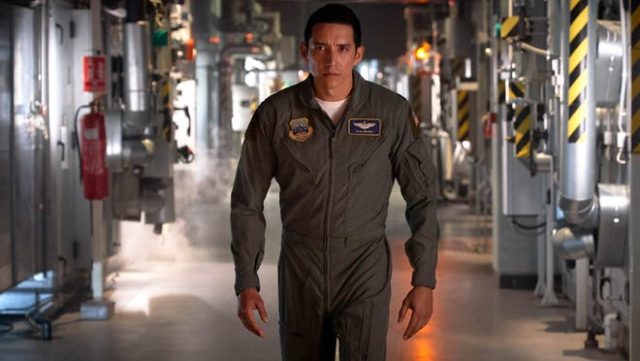
Of course, it’s not a truly Terminator movie without Arnold Schwarzenegger, who reprises his role as an aged T-800 yet again, just as he did in Terminator: Genisys a few years ago. Unlike Terminator: Genisys though, Schwarzenegger’s latest turn playing a ‘retired’ T-800 is a lot more bittersweet and introspective in Terminator: Dark Fate, while also exploring a more organic evolution behind the idea of a Terminator that must eventually find meaning after his mission is over, alongside his future. This T-800 arc actually smartly mirrors the arc of Sarah too, who finds herself similarly aimless after Judgment Day was successfully stopped in 1991, now being mostly defined by her predictable hatred of leftover Terminators, which were sent from a future that no longer exists. Schwarzenegger actually does manage to deliver a pretty standout performance in this movie too, and especially a much more dignified one, after his T-800 character was previously resurrected for Terminator: Genisys, which weirdly almost played him like a prolonged punch line.
If you’re noticing something about the foundation behind the lead characters in Terminator: Dark Fate, it’s likely that this latest sequel is aiming to go back to basics with its formula of personalities. Once again, you have an innocent that’s been sucked into having to fight a coming future that she knows nothing about (Dani, succeeding Sarah Connor and John Connor), an experienced badass from said future that’s been tasked to protect the innocent ‘mark’ (Grace, succeeding Kyle Reese and the second T-800), and of course, the transformed Sarah, who is shouldering the bulk of the cost from fighting the apocalypse.This in particular presents the exact same ensemble foundation that Terminator 2: Judgment Day had, though while this does focus some of the plotting, and does manage to add a bit more weight and pathos to the character arcs, it also perpetuates Terminator: Dark Fate’s issues with chasing the past, rather than embracing the future. This in turn prevents the new personalities from truly standing apart the way that the leads did so easily in the first two Terminator movies.
Terminator: Dark Fate is clearly very concerned with trying to win back the original Terminator fanbase, to the point of not even bothering to address the much-maligned sequels that followed Terminator 2: Judgment Day, and instead simply erasing their events from canon, while also restoring the franchise’s R-rating, after Terminator: Salvation and Terminator: Genisys both ended up being PG-13 movies. This also means that Judgment Day truly was stopped in 1991 as well, leading to a prolonged peace that initially seems to prevent humanity from nuclear apocalypse at the hands of a now-destroyed Skynet. Fast-forward to 2019 however, and a new soldier has appeared from the future, alongside a deadly new Terminator, who now has a new target, completely unrelated to John Connor. Soon afterward, an aimless Sarah Connor also makes contact with this new target and protector, being alerted to the presence of leftover Terminators by a mysterious overseer, Terminators that Sarah has taken it upon herself to destroy with extreme prejudice.
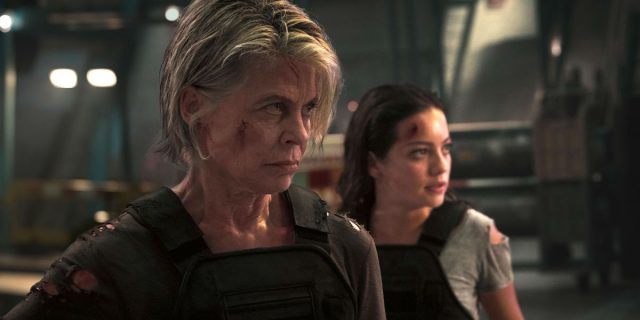
There’s a really good story foundation behind Terminator: Dark Fate, which manages to succeed at doing something that the previous Terminator sequels have consistently failed to do since 2003, and that’s successfully move the story forward in an interesting new direction, without rendering the events of Terminator 2: Judgment Day ultimately pointless. This does however hinge on a big storytelling curveball in the opening minutes that Terminator fans especially are bound to be very divided on, at best. Without spoilers, I would argue that this twist is actually fairly effective, in my opinion, especially in both surprising audiences, and keeping the thematic and character-driven progression of Terminator 2: Judgment Day intact, while still managing to smartly set up a new, but undeniably similar threat that’s reminiscent of Skynet, without actually being Skynet. Some Terminator fans are bound to really hate this early twist though, and that presents a big gamble for the rest of Terminator: Dark Fate’s storyline, which then has to follow this game-changing twist throughout the rest of its runtime.
That’s an interesting conundrum, since, like I said, Terminator: Dark Fate’s storyline seems to be positioned from the ground up to please old-school Terminator fans first and foremost, despite immediately trying to pull the rug out from under them. This latest attempt at a Terminator sequel is otherwise very clearly taking inspiration from movies like Star Wars: The Force Awakens however, in that it’s telling a new story that’s nonetheless filled with intentional callbacks to the original series of movies that most of the established fanbase hold in especially high reverence. While that approach ultimately worked out for Star Wars however, at least initially, it doesn’t seem to mesh as effectively with a more cerebral, mostly adult-oriented sci-fi franchise like Terminator. In trying so hard to call back to the original two Terminator movies, to the point of even recycling some action set pieces from those movies practically unaltered, Terminator: Dark Fate just ends up muddling its themes and narrative direction, and ultimately becomes confused about exactly what it’s trying to say, and how it’s trying to stand apart from the legacy of its two oldest predecessors.
Despite providing the story treatment and a producer effort, James Cameron still doesn’t return to direct Terminator: Dark Fate in the end, with the long-overdue Avatar sequels likely being to blame for this. Instead, original Deadpool director, Tim Miller takes over directing duties in this latest Terminator effort, which, to be fair, is a considerable step up from Terminator: Salvation’s McG and Terminator: Genisys’ Alan Taylor, at the very least. Miller is certainly no James Cameron though, and while he did a great job on the original Deadpool movie from 2016, he does sometimes end up in over his head with a more cerebral and heavy sci-fi production like Terminator: Dark Fate. Miller still delivers the best directing job yet seen on a post-Cameron Terminator sequel, but it’s also true that Miller’s direction can sometimes be all over the map.
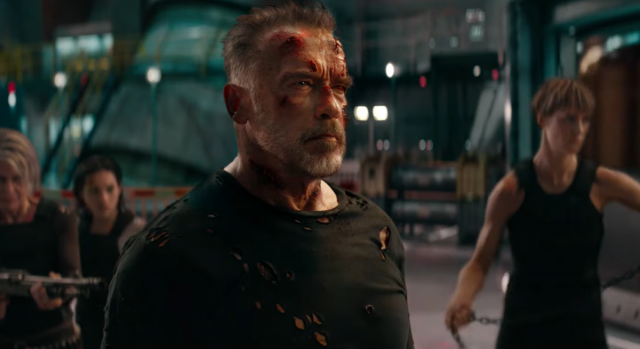
There are a few action scenes in Terminator: Dark Fate that excellently stand out, and do actually come fairly close to replicating the outstanding scope behind the especially hard-hitting thrills of Terminator 2: Judgment Day in particular. During other action scenes however, Miller’s direction feels more muddled and confused, not always effectively capturing what’s going on, especially towards the climax, which leads to events unfolding in the dark of night. Likewise, Miller nails some character-driven scenes, and he actually does fairly well with a lot of the quieter moments that involve Sarah, and Schwarzenegger’s new character, “Carl” especially. Miller is clearly a huge fan of the Terminator movies, and this is likely why Terminator: Dark Fate is so aggressively trying to replicate the feel of Terminator 2: Judgment Day throughout much of its runtime. It’s also likely why Miller seems especially interested in nailing the direction for Hamilton and Schwarzenegger, since he clearly loves their characters as much as any other longstanding Terminator fan.
Like I said though, Miller almost loves Terminator a little too much, and that appears to explain why his direction is more concerned with chasing the work of a more celebrated, longstanding filmmaker, rather than committing to putting Miller’s own stamp on the franchise. Miller does at least make a movie that truly feels like a Terminator movie with Terminator: Dark Fate, which is more than you could often say regarding Terminator: Salvation and Terminator: Genisys, but Terminator: Dark Fate still ultimately feels too hollow and brainless in the end. Miller seems to want to make a movie that incorporates modern debates like those surrounding immigrants, particularly Mexican immigrants around the Southern U.S. border, smartphone saturation, heavy surveillance, and the idea of finding meaning after your life’s work has already been accomplished, but he doesn’t manage to weave these ideas together into the same elegant narrative that the first two Terminator movies presented. Miller’s direction does manage to hit more often than it misses, but it’s also playing it far too safe, which kind of creates the opposite problem compared to what the past few Terminator sequels struggled with.
Tom Holkenborg, the artist formerly known by the stage name, “Junkie XL”, collaborates with director, Tim Miller once again with Terminator: Dark Fate, after also composing the score for the original Deadpool movie. Holkenborg famously jumped ship from Deadpool 2 alongside Miller, following Miller departing that sequel over creative differences with Deadpool movie star, Ryan Reynolds, and that loyalty is felt throughout Holkenborg’s score in Terminator: Dark Fate, which is very perfectly tuned to Miller’s direction, even when said direction gets a little confused. Holkenborg delivers a very imposing and aggressive musical score for Terminator: Dark Fate, one that almost bowls the audience over with a machine-like fury. The score especially appears to try and compensate for Gabriel Luna’s puppy dog eyes as well, attempting valiantly to add more of a sense of terror to the Rev-9, when Luna himself obviously can’t.

A lot of that unrelenting, over-the-top power behind the musical stylings also translates into the rest of Terminator: Dark Fate’s sound engineering, and the result is a movie that is practically deafening with its sheer amount of audio punch. In fact, Terminator: Dark Fate’s audio sometimes feels a little overdone with its extensively powerful metallic clanks and booms during the action scenes, which is another thing that sometimes tries too hard to add increased engagement to the more violent moments, a trick that this movie doesn’t often manage to do well. I must also warn would-be viewers with sensitivity to loud noises and heavy cinematic audio in movie theatres that if you’re planning to see Terminator: Dark Fate in a premium format like IMAX or UltraAVX, I would strongly advise against that. Terminator: Dark Fate is already a really loud movie in standard digital screenings, but in formats like IMAX, it feels like the movie is actively trying to blow out your eardrums! Even if you’re not normally sensitive to theatre audio, I would exercise some caution with these premium sound formats in this case anyway, because you’re much more likely to walk out of Terminator: Dark Fate with a splitting headache, compared to your run-of-the-mill blockbuster.
Terminator: Dark Fate actually cuts the budget a bit compared to the very expensive Terminator: Salvation and the fairly expensive Terminator: Genisys before it, though its funding is still well above the common blockbuster threshold of $100 million. Even with the lesser funding as well, Terminator: Dark Fate still manages to be a pretty good-looking movie, with most of the effects budget predictably being spent on the Rev-9 modeling. The Rev-9 design is indeed pretty cool as well, with a dark liquid metal feel combined with a shadier old-school Terminator look, which is pretty awesome in motion. There are a few moments of clumsier CGI trickery in the action scenes though, and boy do these stick out like a sore thumb! Like I said, Tim Miller is no James Cameron (not that this is his fault, because who truly is?), and Cameron’s surprising uses of practical effects in the first two Terminator movies are still often head-and-shoulders above the cheaper and less noteworthy CGI flourishes that are so often frequent throughout Terminator: Dark Fate.
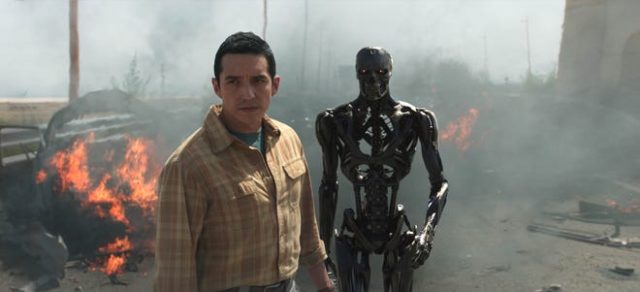
Still, the fight choreography in Terminator: Dark Fate isn’t bad (when the CGI isn’t disturbing it anyway), and there are a few CGI-aided Terminator effects that do admittedly look really cool, even outside of the Rev-9’s bag of tricks. That said though, the scale of Terminator: Dark Fate is still ultimately smaller than the previous two Terminator reboot attempts, and that makes springing for the IMAX cut a little more difficult to justify here. The increased screen size doesn’t really add anything to the experience, and like I said, all that shelling out for a premium theatre format like IMAX will ultimately grant you is likely a migraine in this case. You might as well save the money and stick with a standard digital screening, where you’ll get the same appreciation for the movie’s better effects and action set pieces, even if the visual suite, like so many other elements of Terminator: Dark Fate, can be annoyingly uneven at times.
Terminator: Dark Fate is officially the closest that the Terminator franchise has currently come to recapturing the appeal of the timeless first two Terminator movies that James Cameron wrote and directed. Even then though, this latest attempt to revitalize the long-struggling sci-fi franchise still stays firmly in the shadow of its first two offerings. In fact, Terminator: Dark Fate actually seems to do this by choice, which is likely the biggest failing of this latest Terminator sequel– It’s too busy trying to reverse-engineer what people already love about Terminator, rather than fully giving them some brand new reasons to love Terminator.
This may also somewhat explain Terminator: Dark Fate’s disappointing box office numbers in domestic territories especially, since old-school Terminator fans are clearly the target audience of Terminator: Dark Fate, with no real reason for anyone else to jump on board this franchise here if they don’t already love it, or at least, its acclaimed origins from 1984 and 1991. Terminator: Dark Fate may be the most successful attempt yet to make a Terminator sequel that compares even a little bit to Cameron’s original two Terminator movies, but that still ultimately averages out to Terminator: Dark Fate being a merely decent movie, rather than the same showstopping gem that the original two Terminator movies were back in the 80’s and 90’s. It turns out that even a story treatment directly from James Cameron himself, along with Cameron overseeing at least some of production behind this latest sequel, wasn’t ultimately enough to return this flagging franchise to the standard of its glory days from so many decades ago.
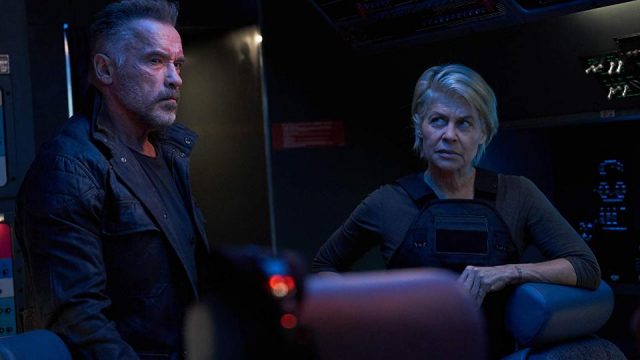
Maybe, when all is said and done, people in North America especially just don’t want any more Terminator movies, and maybe nothing is going to change that for the foreseeable future. Reports from sources at Skydance Media are appearing to indicate that Terminator: Dark Fate is once again having its planned sequels scrapped as well, due to the movie’s especially low box office earnings, essentially making this the third strike for Terminator reboot efforts. That’s a shame, since this movie does at least present a promising story foundation that could have been expanded upon in future follow-ups, one that effectively honours the past, while paving the way for an interesting new future for the Terminator franchise. Even so though, we shouldn’t have to wait for the second movie to see where that promising future takes us.
Terminator: Dark Fate at least effectively feels like a Terminator movie, and at least it does manage to fix several of the biggest mistakes from Terminator 3: Rise of the Machines, Terminator: Salvation and Terminator: Genisys before it. Still though, it’s just not enough to generate much prolonged interest from Terminator fans, nor everyday moviegoers. It pains me to so bluntly recycle an old jab at the feeble efforts to keep revisiting a series that was already so perfectly wrapped up in 1991, but it nonetheless remains true for Terminator: Dark Fate; Maybe these movies shouldn’t be back anymore. Like the new face of Arnold Schwarzenegger’s titular character, Terminator really just needs to enjoy retirement at this point, and leave the future alone.

